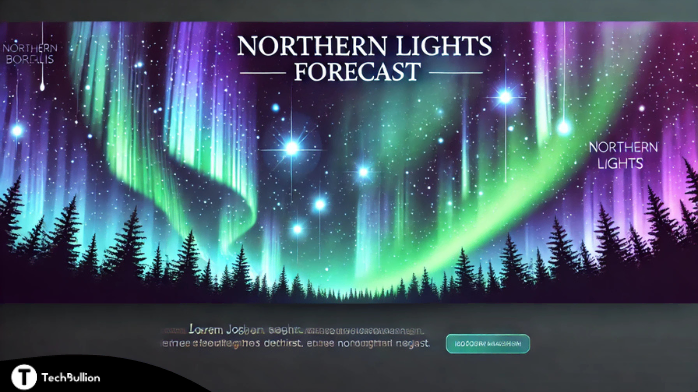Aurora Borealis Northern Lights Forecast: Your Ultimate Guide
 aurora borealis northern lights forecast
aurora borealis northern lights forecast
The Aurora Borealis Northern Lights Forecast, is one of nature’s most stunning phenomena. Watching the colorful lights dance across the sky is an unforgettable experience, but timing and preparation are crucial. This article provides you with everything you need to know about the Aurora Borealis Northern Lights forecast, including how to predict the best times and places to see this natural wonder.
What is the Aurora Borealis?
The Aurora Borealis is a spectacular display of natural light in the night sky, primarily visible in high-latitude regions near the Arctic Circle. It occurs when charged particles from the sun collide with the Earth’s magnetic field, creating glowing lights in vibrant colors such as green, pink, red, and purple.
Why is the Northern Lights Forecast Important?
The Northern Lights forecast is essential for maximizing your chances of witnessing the aurora. Since the lights depend on solar activity and weather conditions, predicting the best time to view them can save you time and ensure a successful experience.
Key factors that influence the visibility of the Aurora Borealis include:
- Solar Activity (KP Index): The KP index measures geomagnetic activity. A higher KP index (4 or above) increases the chances of seeing the aurora in areas farther south.
- Clear Skies: Cloud cover can obstruct the view of the lights, so checking the local weather forecast is critical.
- Darkness: The aurora is best seen in dark skies, away from city lights, and during the winter months when nights are longer.
Tools for Monitoring Aurora Borealis Northern Lights Forecast
1. Aurora Forecast Apps
Download apps like My Aurora Forecast or Aurora Alerts to track geomagnetic activity, KP index levels, and cloud cover. These apps provide real-time updates and notifications.
2. NOAA Aurora Forecast
The National Oceanic and Atmospheric Administration (NOAA) offers a reliable Northern Lights forecast with detailed information on solar storms and aurora activity.
3. Space Weather Websites
Websites like SpaceWeather.com provide comprehensive data on solar activity and predict aurora visibility across different regions.
Best Places to See the Aurora Borealis
1. Norway
Tromsø and the Lofoten Islands are prime locations for aurora viewing. With long, dark winters and clear skies, Norway is a top destination for Northern Lights enthusiasts.
2. Iceland
Iceland’s rugged landscapes and minimal light pollution make it an ideal spot. Popular locations include Thingvellir National Park and Kirkjufell Mountain.
3. Canada
Northern Canada, particularly in Yukon, Northwest Territories, and Alberta, offers incredible aurora displays during winter months.
4. Alaska, USA
Fairbanks is one of the most accessible locations for viewing the Aurora Borealis in the United States.
5. Finland
Finnish Lapland is famous for its aurora-viewing igloos and glass-domed cabins that provide a cozy yet breathtaking experience.
When to See the Aurora Borealis
1. Season
The best time to see the Aurora Borealis is during the winter months, from September to March. Longer nights and clear skies increase the chances of spotting the lights.
2. Time of Night
The aurora is most active between 10 PM and 2 AM, but it can occur at any time during the night.
3. Solar Cycles
The sun goes through an 11-year solar cycle, which affects aurora activity. The next solar maximum is expected around 2025, promising increased chances of vibrant auroras.
How to Photograph the Aurora Borealis
Capturing the Aurora Borealis requires a bit of skill and the right equipment. Here’s how to do it:
1. Equipment:
- DSLR or Mirrorless Camera: With manual settings for ISO, shutter speed, and aperture.
- Tripod: To keep the camera steady during long exposures.
- Wide-Angle Lens: To capture more of the sky.
2. Settings:
- ISO: Start with 800-3200.
- Aperture: Use a wide aperture (e.g., f/2.8).
- Shutter Speed: Experiment with 5-20 seconds, depending on the aurora’s movement.
3. Tips:
- Use a remote shutter or timer to avoid shaking the camera.
- Dress warmly, as you’ll likely be outside for extended periods.
Common Mistakes to Avoid When Chasing the Aurora
- Ignoring the Forecast:
Don’t forget to check both the Aurora Borealis Northern Lights forecast and the weather forecast for clear skies. - Staying in Urban Areas:
Light pollution diminishes visibility. Head to remote locations for the best experience. - Not Being Patient:
The aurora doesn’t follow a strict schedule. Be prepared to wait and stay alert.
Why Witnessing the Aurora Borealis is Worth It
The Aurora Borealis is more than just a visual spectacle; it’s a profound experience that connects us to the universe’s natural forces. From its scientific significance to its cultural symbolism, the Northern Lights inspire awe and wonder.
Final Tips for Planning Your Aurora Adventure
- Plan Ahead: Book accommodations and travel to aurora hotspots well in advance, especially during peak season.
- Pack Smart: Bring warm clothing, snacks, and hot beverages for a comfortable viewing experience.
- Be Flexible: Aurora hunting can be unpredictable, so keep your plans open and adaptable.
Conclusion
The Aurora Borealis Northern Lights forecast is your ultimate tool for planning an unforgettable encounter with one of nature’s greatest wonders. By understanding the science, knowing where and when to look, and preparing adequately, you can increase your chances of witnessing the magical dance of the Northern Lights.
Let the Aurora Borealis Northern Lights forecast guide you to the experience of a lifetime!



